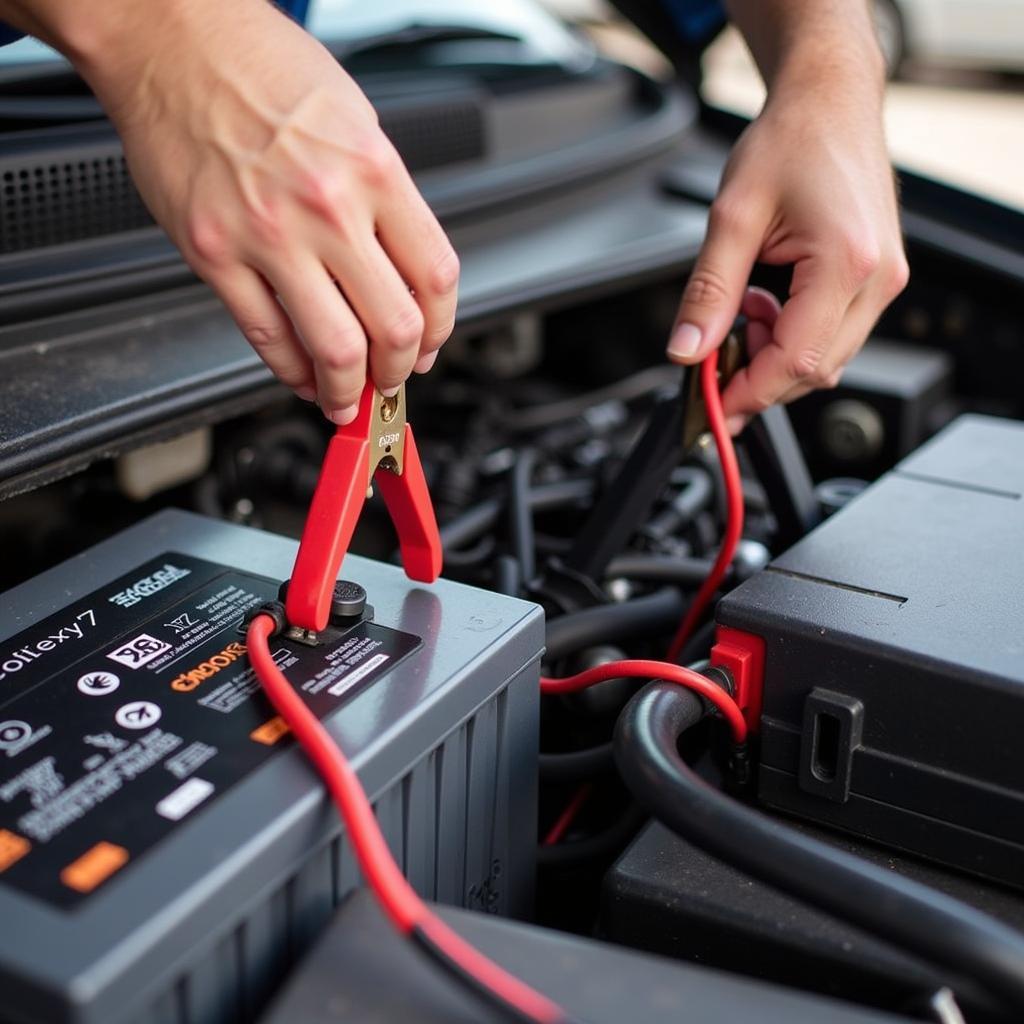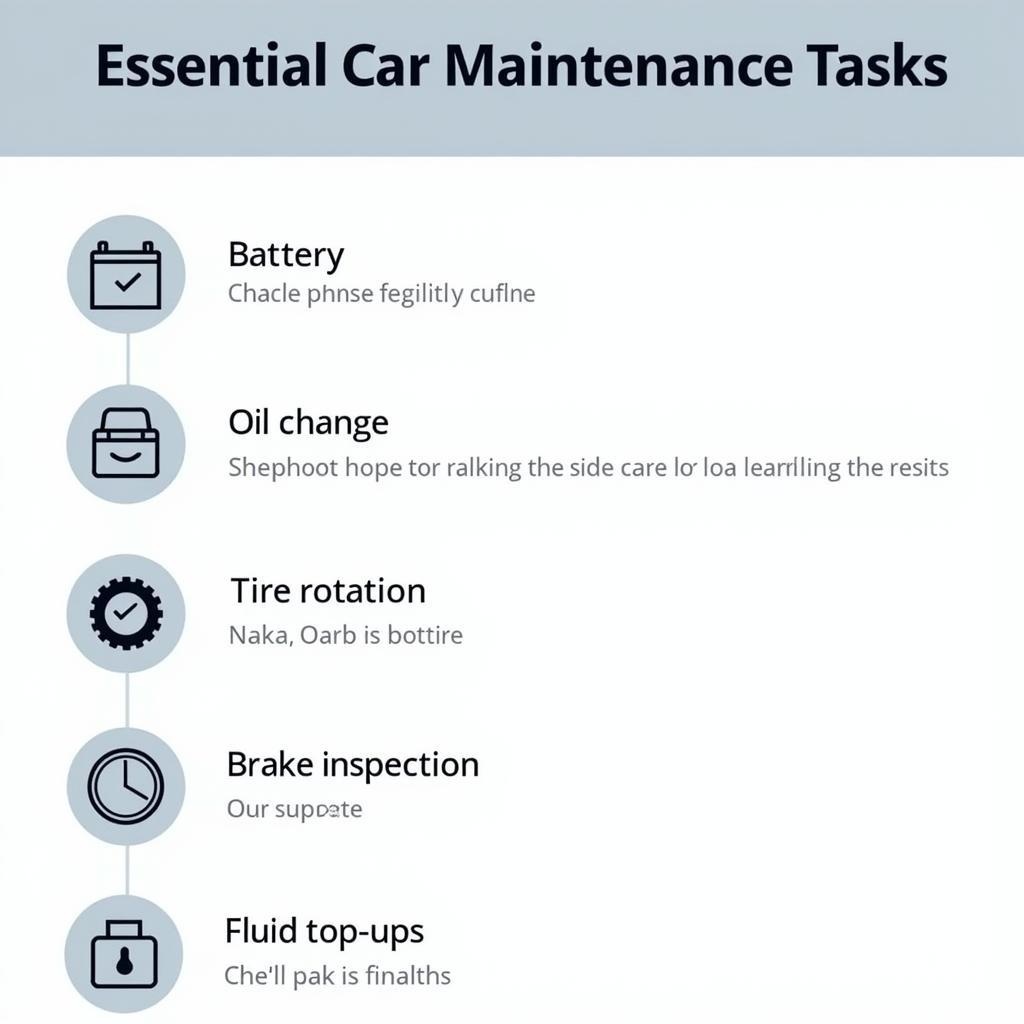A non-starter car problem can be incredibly frustrating, leaving you stranded and unsure of what to do. This guide will walk you through the most common causes of a non-starter car problem and provide you with actionable solutions to get your car back on the road.
Understanding the Non-Starter Car Problem
A “non-starter” simply means your car won’t start. This could manifest in a few ways: the engine might not crank at all, it might crank but not turn over, or it might even start briefly before dying again. Identifying the specific symptoms is the first step to diagnosing the issue.
Common Causes of a Non-Starter Car Problem
Several culprits can contribute to a non-starter car problem, ranging from simple issues to more complex mechanical failures. Let’s explore some of the most frequent ones:
Dead Battery
Perhaps the most common cause of a non-starter car is a dead battery. A dead battery won’t provide enough power to start the engine. Symptoms include dimming headlights, a clicking sound when turning the key, and no cranking at all.
- Solution: Jump-start the car using jumper cables and another vehicle or a portable jump starter. If the car starts, have your battery tested and replaced if necessary.
 Jump Starting a Dead Car Battery
Jump Starting a Dead Car Battery
Faulty Starter Motor
The starter motor is responsible for cranking the engine. A faulty starter motor might make a grinding noise or not engage at all when you turn the key.
- Solution: A faulty starter motor usually needs to be replaced by a qualified mechanic.
Ignition System Problems
The ignition system provides the spark that ignites the fuel in the engine. Issues with the ignition switch, ignition coil, spark plugs, or distributor cap can prevent the engine from starting.
- Solution: Diagnosing ignition system problems requires some mechanical knowledge. A mechanic can use diagnostic tools to pinpoint the faulty component and recommend the appropriate repair.
Fuel System Issues
If the engine isn’t getting fuel, it won’t start. Problems with the fuel pump, fuel filter, or fuel injectors can restrict fuel flow to the engine.
- Solution: Checking fuel pressure requires specialized tools. A mechanic can diagnose and repair fuel system problems effectively.
Empty Fuel Tank
While it may seem obvious, an empty fuel tank can also be the reason for a non-starter car problem. Make sure to check your fuel gauge!
- Solution: Refill the fuel tank.
Sensor Issues
Modern cars rely on various sensors to monitor engine performance. A faulty sensor, such as the crankshaft position sensor or camshaft position sensor, can prevent the engine from starting.
- Solution: Diagnosing sensor issues requires a diagnostic scanner. A mechanic can identify and replace faulty sensors.
Non-Starter Car Problem: Quick Fixes
What can you do when faced with a non-starter car problem?
- Check the obvious: Ensure the car is in park (or neutral for manual transmissions) and that the steering wheel isn’t locked.
- Try jump-starting: A dead battery is a common culprit, so attempt a jump-start first.
- Listen for unusual sounds: Grinding, clicking, or whirring sounds can provide clues about the source of the problem.
- Check your fuel gauge: Make sure you haven’t simply run out of gas.
“A systematic approach to troubleshooting is key when dealing with a non-starter car. Start with the simplest possibilities and work your way towards more complex issues,” advises John Miller, ASE Certified Master Technician.
Preventing Non-Starter Car Problems
Regular car maintenance is the best way to prevent non-starter car problems.
- Regular battery checks: Have your battery tested regularly, especially during extreme weather conditions.
- Routine maintenance: Follow your car’s recommended maintenance schedule for services like oil changes, tune-ups, and fuel system cleaning.
- Address warning signs: Don’t ignore warning signs like dimming lights or strange noises, as they can indicate potential problems.
 Car Maintenance Checklist
Car Maintenance Checklist
“Preventative maintenance is much cheaper than dealing with a major breakdown. Regular checks can save you time, money, and frustration in the long run,” adds Sarah Chen, Automotive Engineer.
Conclusion
A non-starter car problem can be a major inconvenience. However, by understanding the common causes and following the troubleshooting steps outlined in this guide, you can often diagnose and resolve the issue yourself. For more complex problems, seeking professional help from a qualified mechanic is always recommended. If you need further assistance, feel free to contact us at AutoTipPro at +1 (641) 206-8880. Our office is located at 500 N St Mary’s St, San Antonio, TX 78205, United States. We are here to help you get back on the road!
FAQ
- What should I do if my car won’t crank at all? Check the battery connections, try jump-starting, and inspect the starter motor.
- Why does my car crank but not start? This could be due to fuel system issues, ignition problems, or sensor malfunctions.
- How can I prevent a dead battery? Regularly test your battery, limit short trips, and avoid leaving accessories on when the engine is off.
- What is the cost of replacing a starter motor? The cost varies depending on the make and model of your car, but it typically ranges from $200 to $500.
- How often should I have my car serviced? Follow your car’s recommended maintenance schedule, typically every 5,000 to 7,500 miles.
- Can I drive with a faulty sensor? While it might be possible to drive with a faulty sensor, it’s not recommended. It can lead to further damage and potentially leave you stranded.
- What should I do if my car starts and then dies immediately? This could indicate a fuel pump problem, a faulty sensor, or an issue with the ignition system.




Leave a Reply